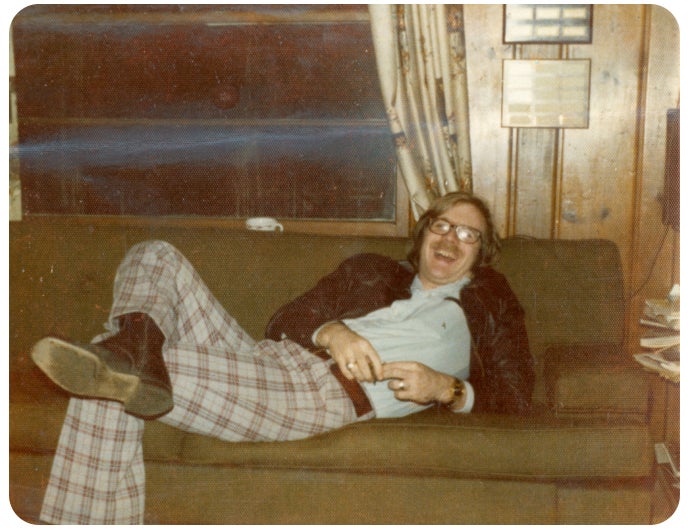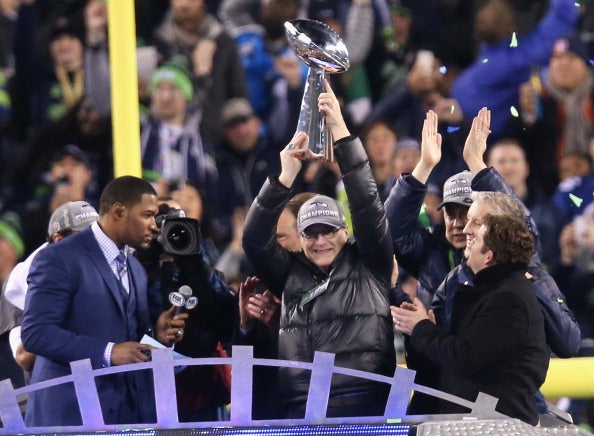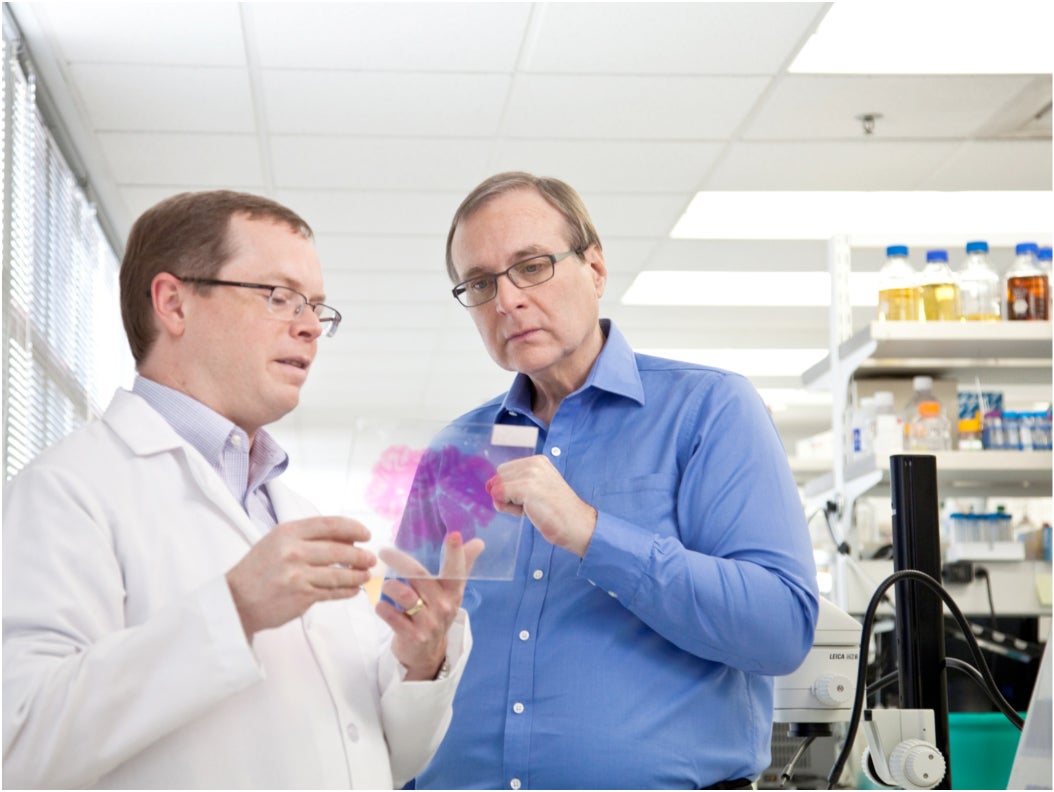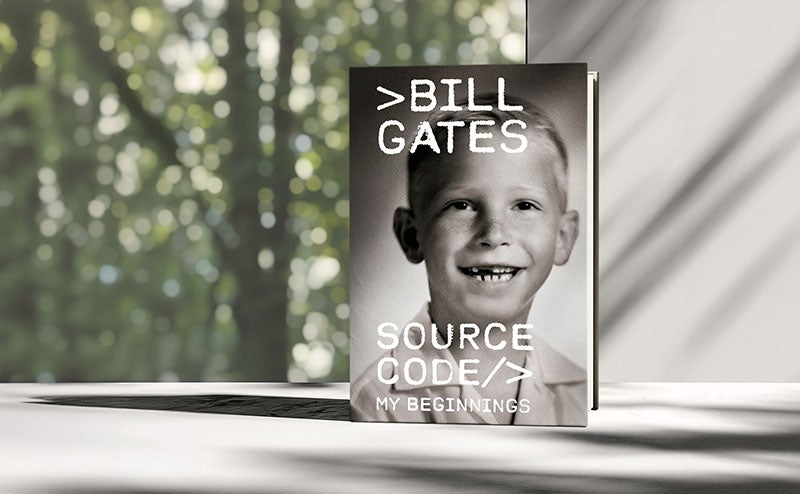We need thousands of scientists following all paths that might lead us to a clean energy future.
Paul Allen was one of the most intellectually curious people I’ve ever known. Ever since we were kids, he seemed to be interested in just about everything. Paul was just as comfortable discussing Shakespeare and playing the guitar as he was talking about computers.
As an adult, Paul continued to embrace that curiosity. It influenced every part of his life—including his approach to philanthropy. His generosity was well known, but I wish more people understood just how wide-ranging his giving was. He made a real impact in so many areas, from scientific research to conservation to community engagement.
I recently had the opportunity to talk about Paul (and show some old photos!) at the Forbes Philanthropy Summit in New York, where he was posthumously honored with the Lifetime Achievement Award for Philanthropy. This is what I said:
Remarks as prepared
Forbes Philanthropy Summit
June 27, 2019
New York, New York
I’m honored to have the opportunity today to talk about my friend Paul Allen, this year’s recipient of the Lifetime Achievement Award for Philanthropy.
To fully appreciate the philosophy behind Paul’s giving, you need to know one thing about him: Paul was driven by an incredible curiosity his whole life. Even when we were just kids, he seemed to be interested in just about everything.
Later in life, Paul gave to a huge spectrum of issues that seem unrelated at first glance. He wanted to prevent elephant poaching, improve ocean health, and promote smart cities. He funded new housing for the homeless and arts education in the Puget Sound region. In 2014 alone, he supported research into the polio virus and efforts to contain the Ebola outbreak in West Africa – all while standing up an amazing new institute for studying artificial intelligence.
If you knew him, the logic in Paul’s portfolio is easy to see. He gave to the things that he was most interested in, and to the places where he thought he could have the most impact. Even though Paul cared about a lot of different things, he was deeply passionate about each of them.

The first time I saw how passionate Paul could get about something, I was in 8th grade. This picture might make you think he was my teacher, but he was actually a sophomore, just a little less than three years older than me.
This teletype is the thing that brought us together. Our school, Lakeside, held a rummage sale and used the proceeds to buy a teletype terminal. We were obsessed with it. The problem was, it was really expensive to use – 40 dollars an hour! The only way for us to get computer time was by exploiting a bug in the system.
We eventually got busted, but that led to our first official partnership between Paul and me: we worked out a deal with the company to use computers for free if we would identify problems.
We spent just about all our free time messing around with any machine we could get our hands on. But computers weren’t the only thing Paul was obsessed with back then.

This was his high school yearbook picture. He always loved to read, and he picked out all these books himself. I know it’s a little hard to see, but it includes James Joyce’s Dubliners, textbooks on philosophy and physics, and the Bible. And this stack doesn’t even include his favorite genre: science fiction. I thought I read a lot of science fiction, but he put me to shame. The Moon is a Harsh Mistress, every Heinlein book, the Foundation series – we used to go over to his house to look through his collection and make sure I wasn’t missing anything.
Paul’s dad was the assistant librarian at the University of Washington. Every time I’d go over to their house, it was just utterly full of books. And because Paul read so much, he knew a lot about a lot of things.
Once, I got curious about – of all things – gasoline. I didn’t understand what “refining” meant. So I turned to the most knowledgeable person I knew. Paul explained it in a super-clear and interesting way.

Paul was also cooler than I was. He played the guitar and was really into Jimi Hendrix, and I remember him playing “Are You Experienced?” for me. I wasn’t experienced at much of anything back then.
But Paul was so passionate about the album that he wanted to share it with me. His early love for music – and pop culture in general – would end up influencing a lot of his giving later on.
One day – when Paul and I were both in Boston – he insisted that I rush over to a nearby newsstand with him. He wanted to show me the cover of the January 1975 issue of Popular Electronics. It featured a new computer called the Altair 8800, which ran on a powerful new chip. I remember him holding up the cover and saying, “This is happening without us!”
Paul was always good at seeing the big picture. He understood before most people that, as microprocessors grew more powerful, the only thing limiting their potential would be the software.

His ability to think creatively and solve difficult problems was important for a lot of Microsoft’s early success. This photo was taken right after the company started to grow and we relocated from Albuquerque to Seattle.
Across the hall from my office and Paul’s office was a gigantic room. There were a bunch of tables with different systems on them, and that’s where Paul and I would do much of our work. The machines in this photograph are the ones we actually used to program a lot of Microsoft’s early software.
Although we were pretty focused on the work in those days, Paul maintained his curiosity in other subjects. And after he left the company, he began to explore those interests in a way that only Paul could.
One time we were watching a Seattle SuperSonics basketball game together. Paul turned to me and asked if I thought someone could just buy a team. I thought he was joking! Nobody who went to school with us would have ever pegged Paul as a future sports owner.
But in 1988, he purchased the Portland Trailblazers. And then the Seattle Seahawks a few years later.

The Seahawks proved to be a valuable asset down the line, but that’s not why he bought the team. The owner at the time had announced the Seahawks were moving to Southern California.
The city was devastated. Local officials approached Paul. They knew he was the only sports-minded person in town who could afford to keep them in town.
Paul wasn’t a big football fan at the time. Plus, the team was pretty bad. But he wanted to help Seattle – so he took a risk and became the Seahawks new owner. Clearly, it paid off.
Paul did a lot for the city. He loved our hometown and always wanted to make it better.
He gave millions to improve the lives of homeless people in the region and helped turn a barren area downtown into one of the most vibrant neighborhoods in the city.
He established a super cool Museum of Pop Culture, supported the local alternative radio station, and even saved the Cinerama movie theater we used to go to as kids. The University of Washington named the computer science department after him for his contributions to the school.
Seattle is also home to what I think might be Paul’s most lasting impact: the Allen Institute.

Paul always wanted to push the boundaries of science. He did it when we were testing the limits of what a chip could do at Microsoft, and he continues to do it today – even after he’s gone – through the work of the Allen Institute.
When I first heard he was creating an organization to study brain science, I thought, “Of course.”
Paul had been obsessed with understanding the human mind since we were kids. How does it manage to learn? Will software ever be able to do that?
The big thing if you’re creating software is figuring out how the brain works. And the more you study it, the more you learn how little we actually know.
Each of the Allen Institute divisions is dedicated to unlocking the mysteries of how the body works. In addition to the brain, the Institute has divisions that study cell science, bioscience and – as of last December, two months after Paul passed – immunology. There’s also a separate institute dedicated to studying artificial intelligence in service of the public good.
All of them are still in the early years of their research. Although they have already produced amazing insights – particularly the Institute’s groundbreaking maps of the brain – I think their most important discoveries are yet to come.
I wish Paul had gotten to see all of the good his generosity will do. He was one of the most thoughtful, brilliant, and curious people I’ve ever met. He deserved so much more time than he got – although no one can say his wasn’t a life well-lived.
When he became one of the earliest signers of the Giving Pledge, he said, “Our net worth is ultimately defined not by dollars but rather by how well we serve others.”
By that measure, Paul’s life was one of immense worth. I will miss him tremendously.
Thank you.





